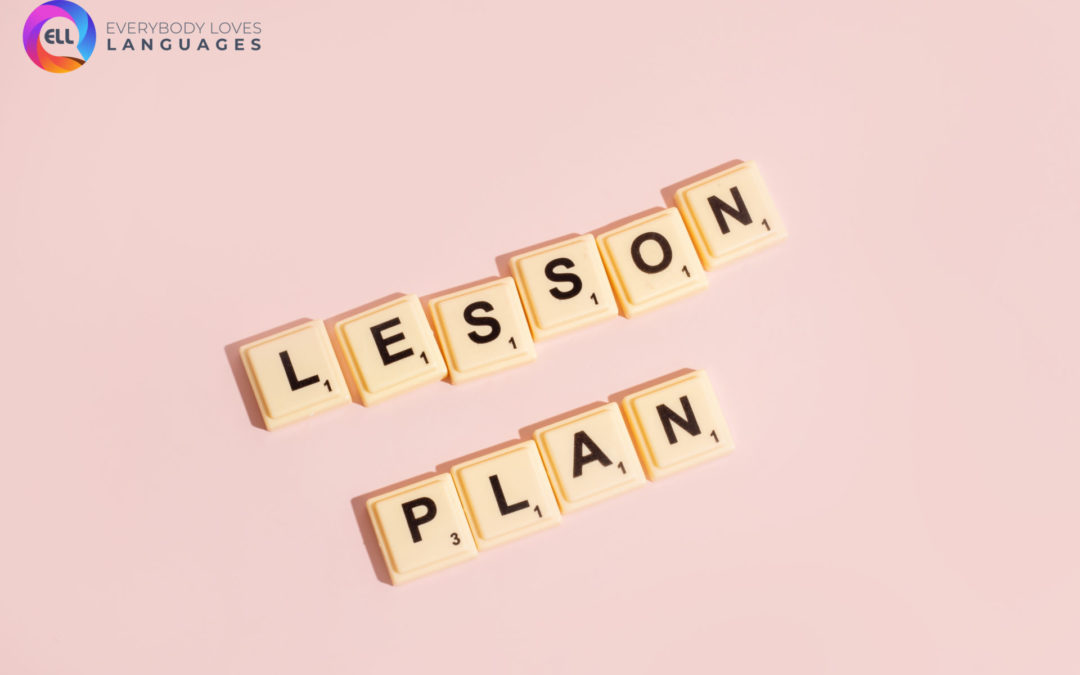By Rebecca Verbeem
Introduction
Teaching English as a Second Language (ESL) is evolving with the integration of digital technology. In today’s digital age, educators have a wealth of digital resources and tools to enhance the ESL learning experience. This blog will guide you through creating a well-rounded ESL lesson plan that incorporates digital solutions, making lessons engaging, interactive, and effective.
Set Clear Objectives
The first step in creating a technology-integrated ESL lesson plan is to define your learning objectives. Decide what you want your students to achieve by the end of the lesson and how digital tools can assist in meeting those objectives. For instance, you might aim to improve your students’ listening and speaking skills, and technology can be a valuable asset for achieving this goal.
Assess Digital Resources
Explore the myriad of digital resources available for ESL teaching. These include language-learning apps, interactive websites, language-learning software, and educational YouTube channels. Research and evaluate these tools to ensure they align with your learning objectives and student’s needs.
Choose Interactive Activities and Multimedia
- Movies: Incorporating movies in the classroom can be a captivating way to expose students to authentic language usage, diverse accents, and cultural insights while promoting listening comprehension and sparking engaging discussions.
- Songs: Integrating songs into ESL lessons can infuse a fun and memorable element, helping students improve pronunciation, vocabulary, and language rhythm while fostering a deeper appreciation for culture through music.
- Virtual Storytelling: Encourage students to create digital stories, presentations, or videos. This enhances their speaking and writing skills and is a great team task for soft skill building.
- Virtual Language Exchanges: Connect your students with English speakers worldwide through language exchange apps and websites. This provides an opportunity for real-world conversations.
Define When to Use Media
The use of media in a lesson plan can be strategically incorporated at various points, depending on your specific teaching objectives and the desired learning outcomes. Here are some ideal times to use media in a lesson plan:
- Introduction/Warm-Up: You can use media to pique students’ interest and introduce the lesson topic. This could involve showing a short video clip, playing an audio snippet, or sharing a thought-provoking image. It’s an excellent way to engage students and activate their prior knowledge.
- Presentation: Use media to present new content, such as vocabulary words, grammar rules, or cultural insights. For instance, show an infographic, an educational video, or an interactive animation to explain a concept visually and make it more memorable.
- Practice: Incorporate learning platforms during the practice phase of the lesson to reinforce learning. Interactive lessons or role-play scenarios based on an audio or video clip can help students apply what they’ve learned in a practical context.
Take Advantage of Homework
Digital homework assignments offer a myriad of benefits in the ESL classroom. They not only provide students with the opportunity to engage with language outside the confines of the classroom but also empower them to take ownership of their learning. These assignments can be tailored to suit different learning styles and preferences. For instance, a student who enjoys watching videos can be assigned to watch a movie in English. In contrast, a more tech-savvy student may thrive on interactive language-learning platforms or online quizzes. Additionally, digital homework tasks can be easily monitored and assessed. Teachers can track progress, identify areas of improvement, and provide timely feedback. This also helps students refine their language skills and allows educators to adapt their lesson plans to better cater to their students’ evolving needs. Overall, digital homework assignments are a valuable tool for reinforcing lessons, promoting self-study, and encouraging students to embrace the online resources available for language acquisition.
Monitor and Assess Progress
Monitoring and assessment in digital platforms for ESL teaching offer several advantages. These tools allow teachers to track students’ progress in real-time, providing valuable insights into their strengths and areas that need improvement. Automated quizzes, interactive exercises, and digital assignments can be instantly graded, saving the teacher time, and offering students immediate feedback. Additionally, the data generated by these platforms can help educators tailor their lessons to suit individual learning needs better, ultimately enhancing the effectiveness of their instruction. By harnessing the power of digital monitoring and assessment, teachers can create a more dynamic and personalized learning experience for their ESL students.
Adaptability
Be prepared to adjust your lesson plan if necessary, and don’t be afraid to try something new! Sometimes, a lesson might progress faster or slower than expected. Flexibility is a crucial skill for teachers, as it allows them to adapt to their students’ needs and pace of learning.
Conclusion
Incorporating digital solutions into your ESL lesson plans can transform the learning experience for your students. By setting clear objectives, assessing digital resources, and incorporating engaging apps and platforms, you can create dynamic, interactive lessons that cater to various learning styles and needs. Embrace technology as a powerful tool for enhancing language acquisition, cultural understanding, and engagement in your ESL classroom. As the digital landscape continues to evolve, so will your ability to provide innovative and effective ESL instruction.
For more information on ELL’s interactive online courses, visit us at https://www.elltechnologies.com/.




Comentarios recientes